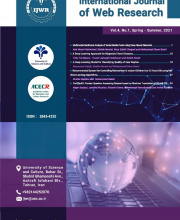۱.
A workflow consists of a set of independent tasks, while workflow scheduling in a cloud environment is a proper permutation of these tasks involving virtual machines. Selecting the permutation with minimum completion time from among all of the arrangements, in which the requests and diversity of virtual machines increase, is an NP-hard problem. Given that, in addition to the makespan, other objectives should be considered in the scheduling problem in a real environment, which, in most cases, are conflicting objectives, the scheduling problem becomes more complicated. Therefore, multi-objective heuristic algorithms represent the perfect solution to these problems. To this end, we extended a recent heuristic algorithm known as black hole optimization (BHO) and presented a multi-objective scheduling method for a workflow application based on the Pareto optimizer algorithm. Since multi-objective algorithms select a set of permutations with an optimal trade-off from among conflicting objectives, we use a decision-making method – the weighted aggregated sum product assessment (WASPAS) – in the following and select a solution that offers suitable permutation from among all solutions of the Pareto optimal set. Our proposed method is able to consider user requirements, as well as the interests of service providers. Using a balanced and unbalanced workflow, we compare our proposed method with the SPEA2 and NSGA2 algorithms based on conflicting objectives: (1) makespan, (2) cost and (3) resource efficiency.
۲.
Discovering important nodes in graph data attracted a lot of attention. Social networks are good examples of graph data in which each node represents a person and each edge represents a relationship between two people. There are several methods for the task of discovering important nodes in graph data. In this paper, important people are defined with their roles in society or organization. We propose an efficient method to discover leaders in graph network. For this purpose, both structural feature like entropy and inherent features including from, to, subject and message's time of social networks are used to propose a novel method for discovering important nodes in social networks. The proposed method was applied to Enron dataset and compared with previous methods. The proposed method succeeded to first, discover more important roles in Enron dataset, second, determine CEO as leader of Enron Corporation and third, discover two out of four CEOs among top VIPs.
۳.
The discovery and analysis of community structures in networks has attracted increasing attention in recent years. However there are some well-known quality metrics for detecting and evaluating communities, each of them has its own limitations. In this paper, we first deeply discuss these limitations for community detection and evaluation based on the definitions and formulations of these quality metrics. Then, we perform some experiments on the artificial and real-world networks to demonstrate these limitations. Analyzed quality metrics in this paper include modularity, performance, coverage, normalized mutual information (NMI), conductance, internal density, triangle participation ratio and cut ratio. Comparing with previous works, we go through the limitations of modularity with much more accurate details. Moreover, for the first time, we present some limitations of NMI. In addition, however it is known that performance has tendency to get high values in large graphs, we explore this limitation by its formulation and discuss several specific cases in which performance even on small graphs gets high scores
۴.
Social media has made major changes in various e-commerce areas. One of these marketing cases is in e-commerce systems. The relationship between customers and business is very much appreciated by marketers. The use of social media by customers has given marketers the opportunity to get more information from customer feedback. Recently, in social media, marketers look for customers who have the most impact on other customers. They can influence the ideas of other customers with their opinions about a new product. In addition, influential users can have the greatest impact on specific domains. This domain may be in the domain of a product or service. Therefore, in this article influential users on social media have been studied in terms of impact in different areas. The proposed approach is for influential users using the social knowledge management approach. The knowledge cycle consists of knowledge organization, storage, retrieval, and knowledge discovery and knowledge management, where all explicit and implicit knowledge has been tried to accurately disclose affected users. In this paper, firstly, the problem was adapted to the knowledge management cycle, and in the steps of this cycle, artificial intelligence techniques such as Baysian networks were used to classify and identify influential users .In order to investigate the proposed method, various scenarios based on a variety of data sets are used for evaluation and the results of these studies show the high accuracy of the proposed method in identifying influential users.
